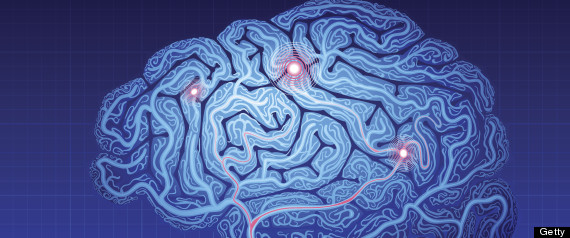fMRI and EEG Study of Decision-Making Processes in Brain
by Jason von Stietz, M.A. - September 19, 2015

Researchers at the Institute for Neuroscience and Psychology at the University of Glasgow investigated the processes in the brain related to learning to avoid making mistakes and learning to make god decisions. The study simultaneously utilized EEG and fMRI allowing researchers to study decision-making in the brain with both the high temporal precision offered by EEG and the ability to detect precisely where these process are taking place in the brain offered by fMRI. The study was discussed in Neuroscience News:
Imagine picking wild berries in a forest when suddenly a swarm of bees flies out from behind a bush. In a split second, your motor system has already reacted to flee the swarm. This automatic response – acting before thinking – constitutes a powerful survival mechanism to avoid imminent danger.
In turn, a separate, more deliberate process of learning to avoid similar situations in the future will also occur, rendering future berry-picking attempts unappealing. This more deliberate, “thinking” process will assist in re-evaluating an outcome and adjusting how rewarding similar choices will be in the future.
“To date the biological validity and neural underpinnings of these separate value systems remain unclear,” said Dr Marios Philiastides, who led the work published in the journalNature Communications.
In order to understand the neuronal basis of these systems, Dr. Philiastides’ team devised a novel state-of-the-art brain imaging procedure.
Specifically, they hooked up volunteers to an EEG machine (to measure brain electrical activity) while they were concurrently being scanned in an MRI machine.
An EEG machine records brain activity with high temporal precision (“when” things are happening in the brain) while functional MRI provides information on the location of this activity (“where” things are happening in the brain). To date, “when” and “where” questions have largely been studied separately, using each technique in isolation.
Dr. Philiastides’ lab is among the pioneering groups that have successfully combined the two techniques to simultaneously provide answers to both questions.
The ability to use EEG, which detects tiny electrical signals on the scalp, in an MRI machine, which generates large electromagnetic interference, hinges largely on the team’s ability to remove the ‘noise’ produced by the scanner.
During these measurements participants were shown a series of pairs of symbols and asked to choose the one they believed was more profitable (the one which earned them more points).
They performed this task through trial and error by using the outcome of each choice as a learning signal to guide later decisions. Picking the correct symbol rewarded them with points and increased the sum of money paid to them for taking part in the study while the other symbol did not.
To make the learning process more challenging and to keep participants engaged with the task, there was a probability that on 30% of occasions even the correct symbol would incur a penalty.
The results showed two separate (in time and space) but interacting value systems associated with reward-guided learning in the human brain.
The data suggests that an early system responds preferentially to negative outcomes only in order to initiate a fast automatic alertness response. Only after this initial response, a slower system takes over to either promote avoidance or approach learning, following negative and positive outcomes, respectively.
Critically, when negative outcomes occur, the early system down-regulates the late system so that the brain can learn to avoid repeating the same mistake and to readjust how rewarding similar choices would “feel” in the future.
The presence of these separate value systems suggests that different neurotransmitter pathways might modulate each system and facilitate their interaction, said Elsa Fouragnan, the first author of the paper.
Dr Philiastides added: “Our research opens up new avenues for the investigation of the neural system underlying normal as well as maladaptive decision making in humans. Crucially, their findings have the potential to offer an improved understanding of how everyday responses to rewarding or stressful events can affect our capacity to make optimal decisions. In addition, the work can facilitate the study of how mental disorders associated with impairments in engaging with aversive outcomes (such as chronic stress, obsessive-compulsive disorder, post-traumatic disorder and depression), affect learning and strategic planning.
Read the original article Here

 Subscribe to our Feed via RSS
Subscribe to our Feed via RSS